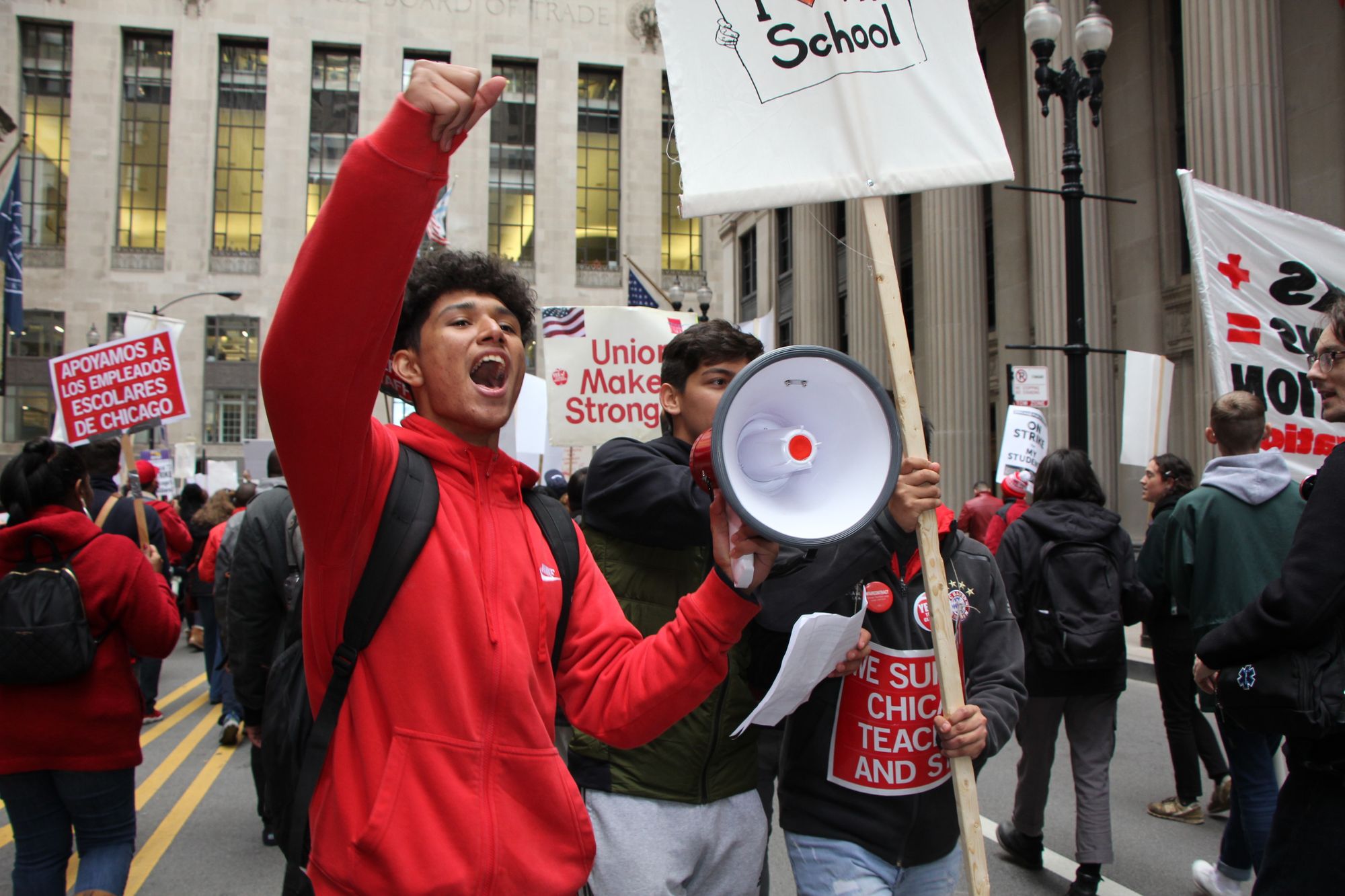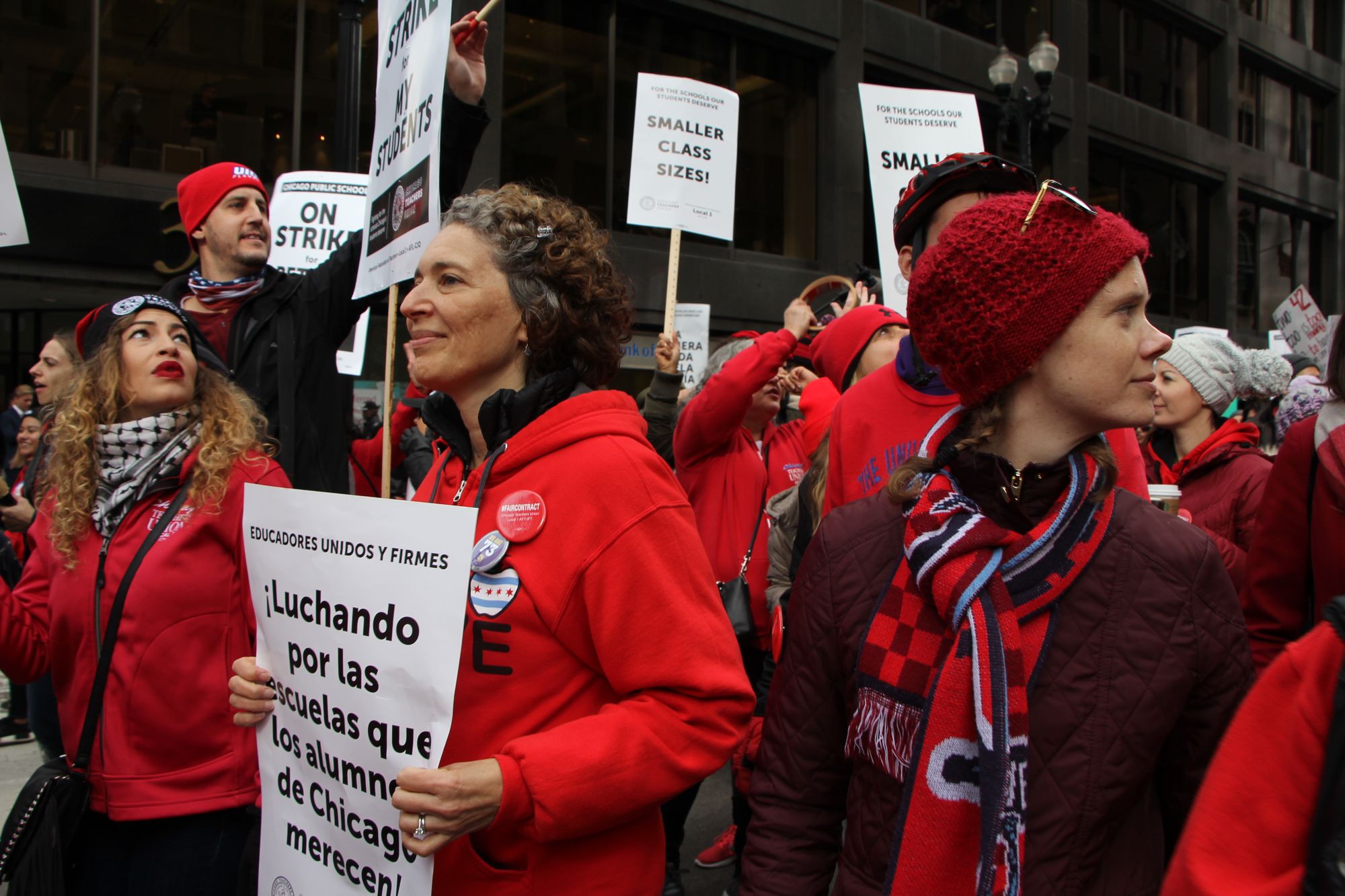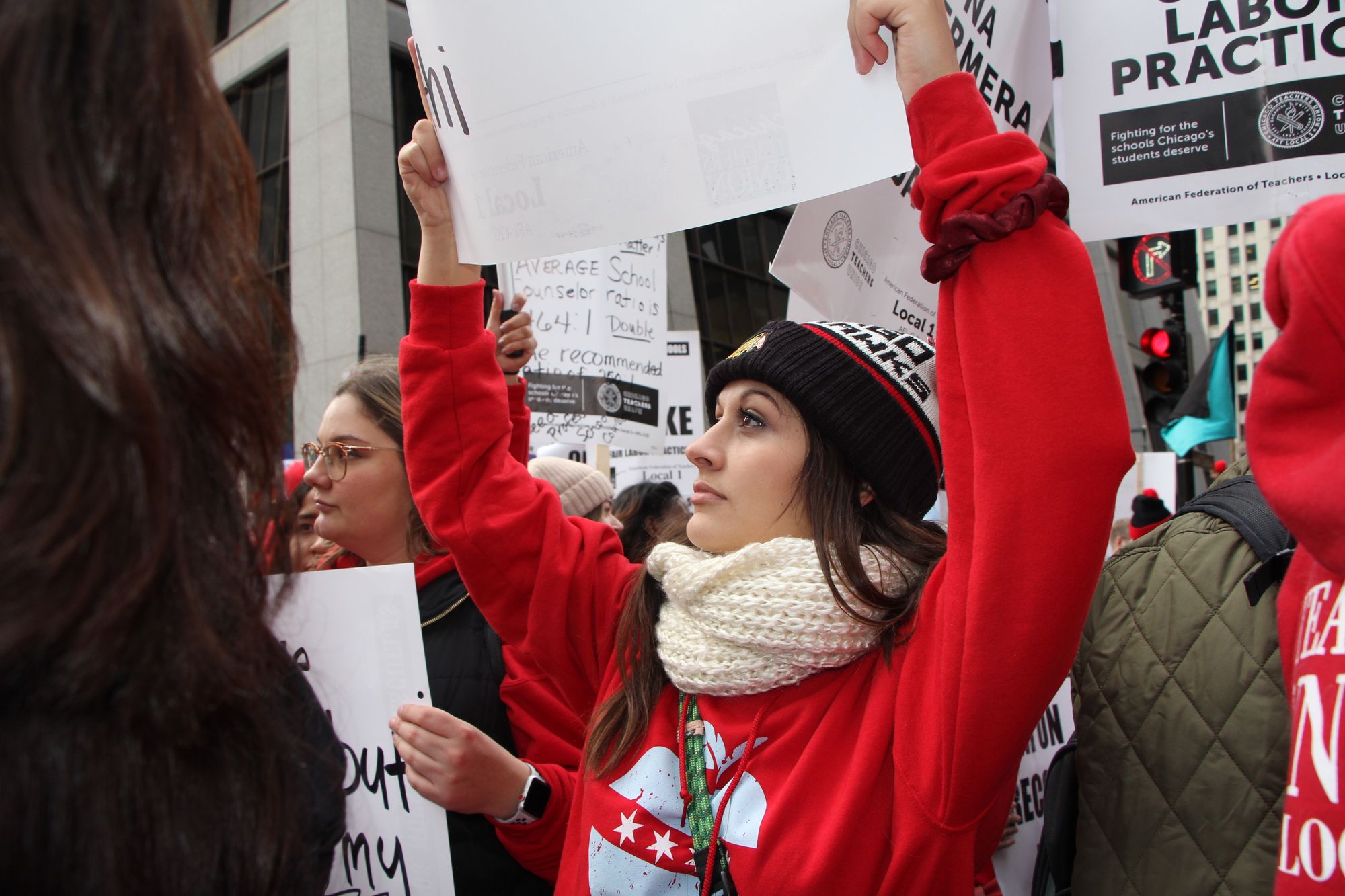On Thursday, Tamika Graham walked into Pete’s Grill, a local breakfast spot barely a five minute walk away from Gale Community Academy in Chicago, where she teaches kindergarten. A child sitting atop a high chair, his legs swinging above the ground, noticed her.
“Morning, Ms. Graham,” her student said in a singsong voice. Graham smiled and greeted him.
Graham, along with more than 25,000 other educators and school staff around Chicago, would not see her students in class that day because the Chicago Teachers Union is on strike.

After negotiations stalled between the CTU and the city, members of the CTU and their supporters hit the picket lines early Thursday. The CTU is asking for better pay, more staff, smaller class sizes and progress on social justice issues that impact students.
“We’re definitely underfunded, understaffed,” Graham said, dressed in CTU red. “And we need our technology updated. Some of our computers are so out of date that we don’t even really use them. They’re useless.”
When Graham walked back to the group of protestors outside Gale, they were chanting: “Get up, get down, Chicago is a union town.”
While city officials have privately expressed their belief that the strike is a political show of force by the union as opposed to an actual dispute about what’s best for Chicago schools, teachers at Gale insisted this was not the case.
“I’m hoping this ends tonight,” said Dina Muellman, who was recently hired at Gale after being laid-off two separate times. “We’re not enjoying this. The teachers want the kids back in school.”
Gerardo Argueta, a bilingual coordinator at Gale, said, “when you go into teaching, you’re not in it to get rich.”
“We have to create safe spaces,” Argueta said, referring to the CTU’s demand for sanctuary schools. “Because if the child can’t feel safe, he or she will not be able to learn. We can’t penalize the child for his or her parent’s actions.”




Protestors consisted of not just current teachers, but also former teachers and community members who wanted to show their support.
“I’m here because my son used to go to Gale Academy many, many, many, many years ago,” said Horolyn “Holly” Davis, who also worked in both special education and as a bus attendant.

Davis emphasized her belief that the protestors were fighting because of their love for children.
“There are some people that don’t have this incredible love to stand on a corner and scream and yell,” Davis said. “You know, it takes a lot of love to do that. It takes a lot of concern. So why shouldn’t a child feel that? Instead of love being out here, it should be in the classroom right now. Let them feel that love.”
Michael Harrington, a co-chair of Network 49, a local progressive community organization, said he was particularly passionate about the issue of class size because of his own experience raising two children.
“We talk a good game about caring about kids, but when it comes to spending our money, our culture isn’t doing it,” Harrington said. “That’s the problem.”